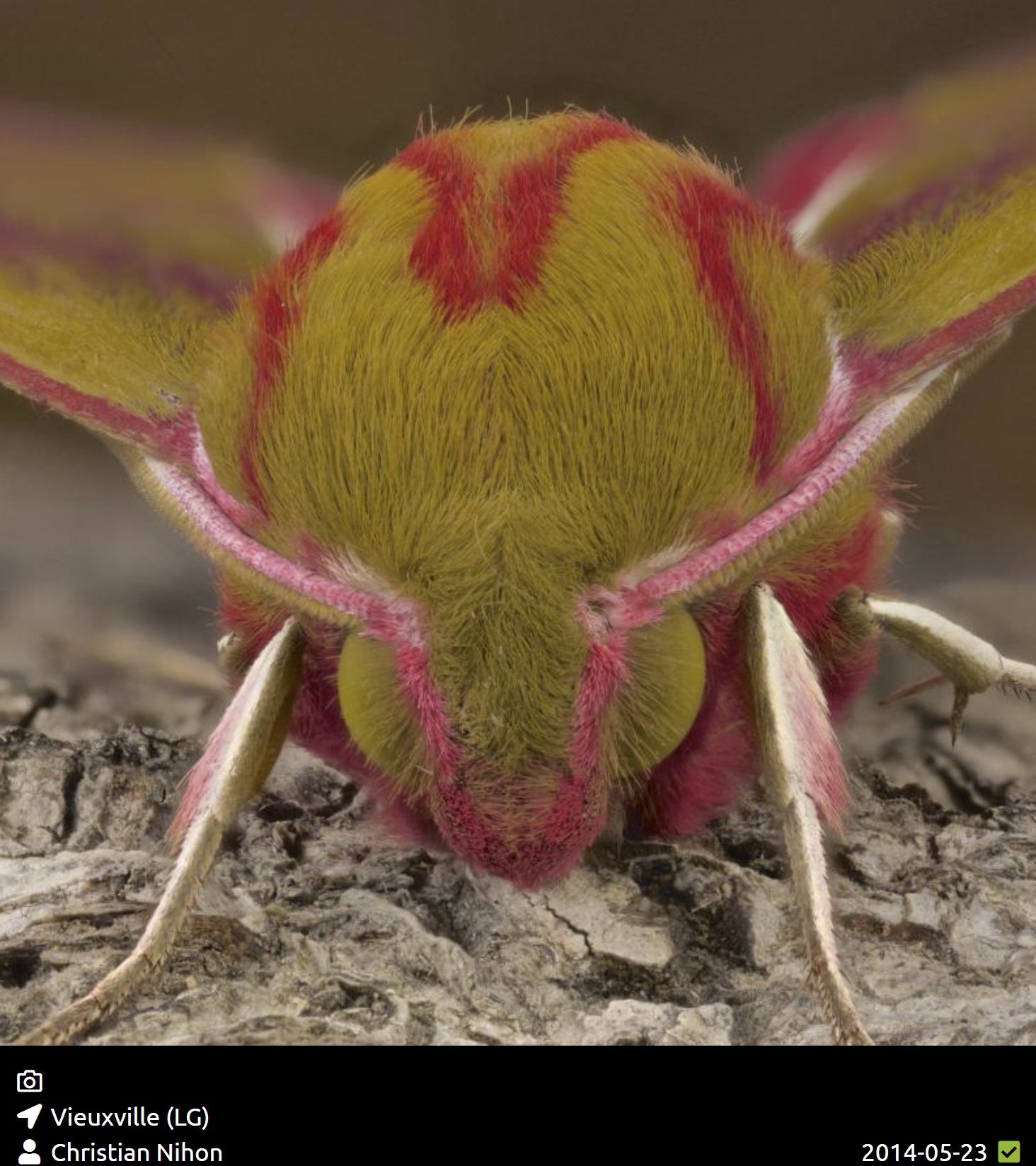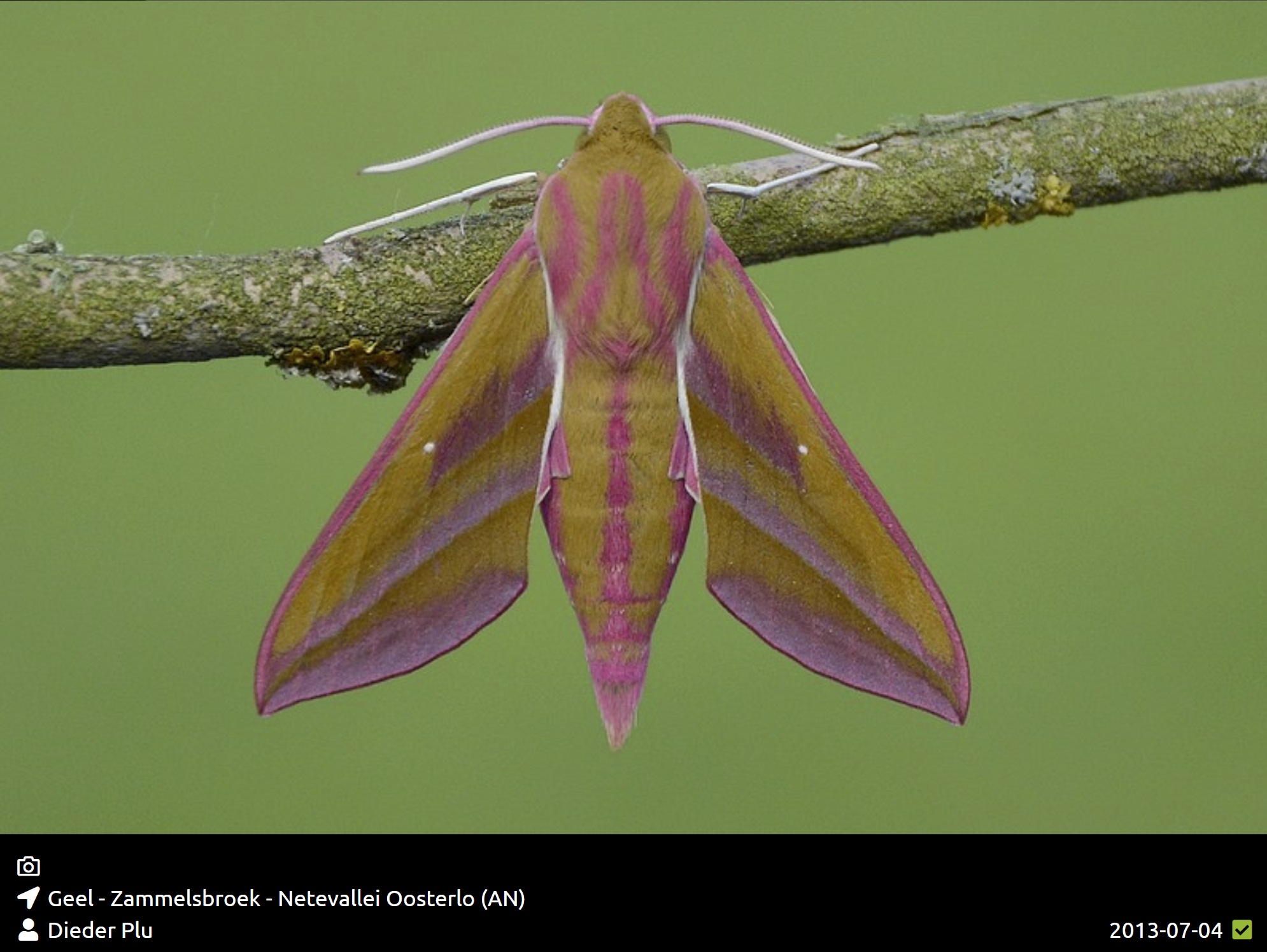Parallel worlds
a study of the article:
Briolat, E.S., Gaston, K.J., Bennie, J. et al. Artificial nighttime lighting impacts visual ecology links between flowers, pollinators and predators. Nat Commun 12, 4163 (2021). https://doi.org/10.1038/s41467-021-24394-0
Introduction
Without any knowledge in biology I dived into this paper in order to understand the impact of artificial light on the visual ecology of some animals that live in northern European cities.
The animal chosen in the study is the Elefant Hawkmoth (Deilephila Elpenor), a very common Sphynx. This animal has an exceptional ability to see colors at night, even with extremely low light levels. The animal is not exclusively active at night but more active at twilight and it can be pollinating or flying at night.


Source: https://observations.be/species/1696/
The paper published in Nature Communications is very sexy with figures such as this one, evaluating the impact of different artificial light technologies on a simple biological system consisting of two observers: the Hawkmoth (which is a prey) and a Blue tit (which is a predator). The impact of light is evaluated for 5 light levels that correspond to sunset (10 nit), twilight (1 nit), moonlight (0.1 nit) up to a very dark night illuminated only by starlight (0.001 nit)

The light sources which are evaluated are from older generations (Metal halide, Mercury vapour, HPS, LPS) and new generations (White LEDs, PC amber LEDs, Orange LED). Their impact on animal vision is compared to the effect of natural light (daylight, but also twilight, moonlight and starlight).
From the figure above, one quickly concludes that White LEDs are an improvement against other artificial lights commonly used in the public space, which is a good thing when all western and eastern cities are being populated by those new generation and “energy-efficient” streetlights.
So what’s that figure and how did the authors arrive to this result?
_
Some basic elements of light-pigment-eye interactions
Light is, by definition, energy which stimulates the photoreceptors of an animal. Usually defined as the electromagnetic energy that is visible for human beings, let’s define it instead around a specific species equiped with its own photoreceptors. Red light is not light for the Elefant Hawkmoth, who does not sees it, while Ultraviolet, invisible for us*, is light for the Hawkmoth (but not for humans). Deilephila has a dedicated photoreceptor type for UVA ( wavelenghts around 350 nm) but no photoreceptors for long wavelengths (Red light for humans). Both species are trichromats, meaning they have 3 types of photoreceptors dedicated to colour vision (S, M, L** for human beings and UV, S, M for Eilephila Elphenor).
* We do see UV if the intensity is high enough and if the wavelength of the UV light is not too different from visible light. For example, 365 nm UV appears white for the human eye at high intensities, and 380 nm appears violet. ** S is for short wavelengths, M for medium wavelenghts, L for long wavelengths